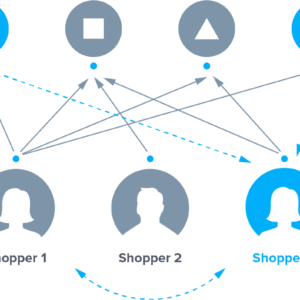Work
Increasing online sales by 7 fold for one of the world’s biggest retailers

Personalised customer recommendations are a key tool
to driving more sales in retail. Many recommendation
systems are inflexible and slow to adapt.
Faculty’s technology allowed one of the world’s biggest retailers to increase their revenue by seven-fold through smarter and quicker recommendations for their customers.
Customer
One of the world’s biggest retailers, with 7,000 stores worldwide and 80 million weekly customers.
Problem
Retailers often struggle to harness the potential for suggesting additional products to consumers online. Many of the recommendation systems currently used are slow and lack the power and flexibility required to take full advantage of the available data. The retailer asked Faculty to develop a data-based method that would help increase online sales.
Solution
We developed two models for making smarter, quicker recommendations based on the sequence in which people shop as well as on matching common pairings of items. Both models made use of a technique called collaborative filtering.
First, we developed a Just Added model to operate when consumers are in the early phase of their shopping and have few items in their basket. When a new item is added further items are suggested based on data relating to items that are usually bought in sequence (such as milk after cereal, tomatoes after carrots, biscuits after tea).
A second model was then developed to analyse a full basket and ask the shopper What’s Missing? Towards the end of an online shopping session, before checkout, we created a recommendation system to make suggestions of items that a shopper may have overlooked.

In collaborative filtering, the preferences of many users are used to predict the preferences of others who make similar choices. Here, shoppers 1 and 3 have choices in common.
Impact
The project has delivered a seven-fold revenue increase from sales attributable to the recommendation engine compared to the previous recommendation program. This translates into a potential increase in online sales of £25 million a year.
The project makes online shopping easier, introduces an explorative element by suggesting items that might not have been bought before and closes the gap between online and in-store marketing.